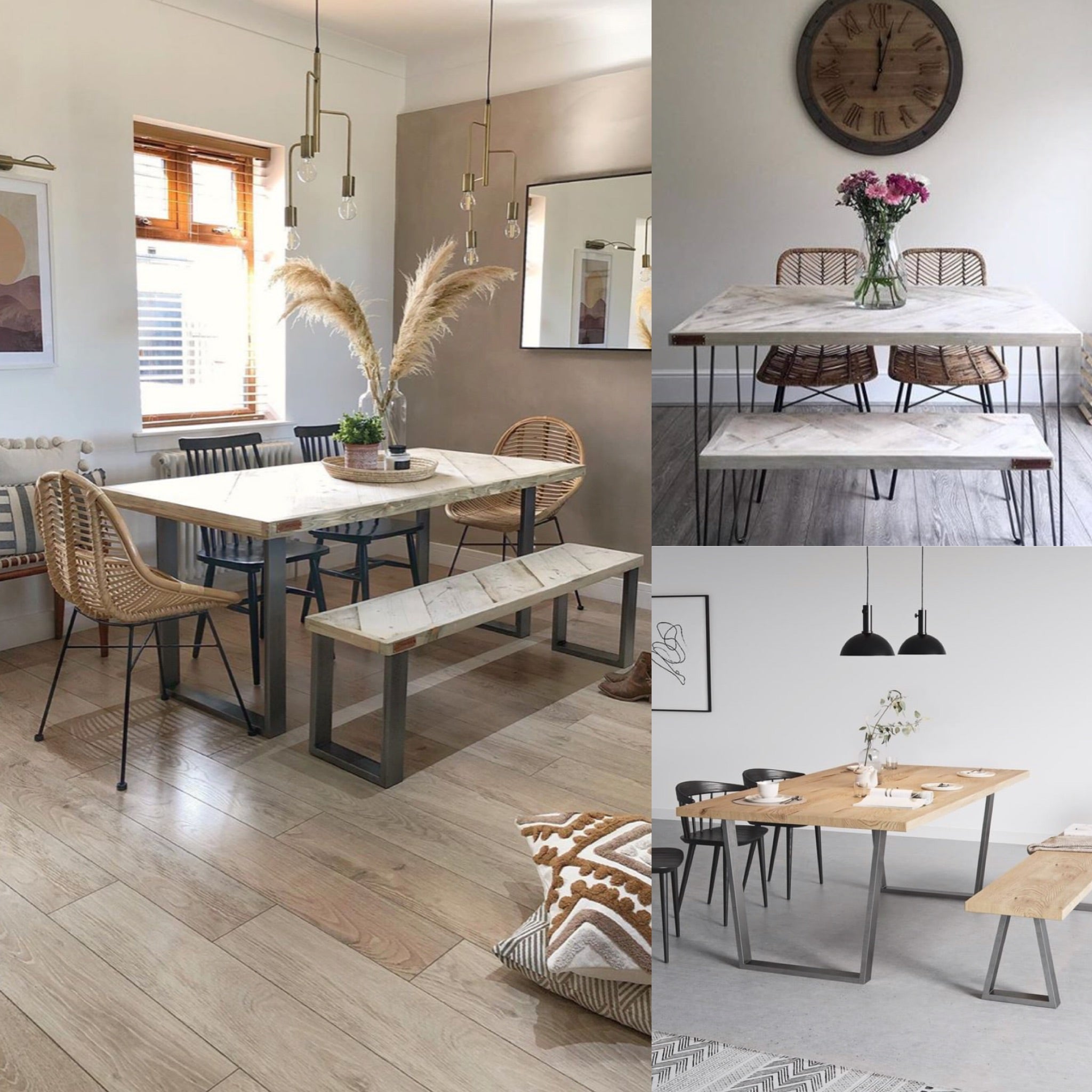How the Right Dining Room Table Legs Can Complete Your Dining Room Look
Professional Tips for Setting Up Eating Area Table Legs for Optimum Stability
When it comes to installing eating area table legs, attaining maximum stability is extremely important for both functionality and appearances. What details methods can boost security also additionally?
Pick the Right Legs
When choosing the proper legs for your dining-room table, it is essential to take into consideration both functionality and appearances. The legs you choose will considerably influence the overall layout and stability of the table. Review the table's planned use; if you anticipate regular gatherings, sturdier legs, such as those made from solid timber or steel, may be much more suitable, as they supply boosted sturdiness and assistance.
Typical eating tables typically range from 28 to 30 inches in height, so make sure the legs align with this standard for comfort. Conical legs can include a contemporary touch, while turned legs could communicate an extra timeless aesthetic.

Select Appropriate Equipment
Exactly how can the right hardware improve the stability and durability of your eating area table? The selection of appropriate equipment is vital to making sure that the legs of your table are securely connected and able to hold up against normal usage. Premium screws, bolts, and brackets supply the needed strength to support the weight of the table, as well as any kind of added lots put upon it during events or dishes.
When picking screws, select those made from durable materials such as stainless-steel or brass, which withstand corrosion and keep integrity with time. The size of the screws is equally essential; they need to pass through deeply into the table's framework without compromising stability. For bolted links, consider making use of lock washers to avoid loosening as a result of resonance or motion.
In addition, making use of corner brackets can add added assistance, specifically for larger tables or those with larger tops. These braces disperse weight equally and aid maintain the table's form. Guaranteeing that the hardware you pick is suitable for the specific materials of your table will further boost its overall security and long life, permitting you to enjoy your eating experience for several years ahead.
Ensure Proper Alignment
Appropriate placement of dining room table legs is important for both aesthetic charm and functional stability. To achieve ideal positioning, begin by measuring the distance from the table's review corners to the leg add-on points.
Use a level throughout installment to verify that each leg is vertical to the table top. This step is important, as even minor inconsistencies can rise into significant security concerns gradually. It is suggested to note the desired leg placements on the underside of the table with a pencil or covering up tape before protecting them. This technique works as an aesthetic overview, permitting changes as required.
Moreover, ascertain the placement after the first screws are tightened up, as changes might be essential prior to totally protecting the equipment. By prioritizing appropriate alignment, you not just enhance the table's overall style yet also guarantee that it continues to be practical and steady for many years ahead.

Consider Weight Distribution
After making sure proper positioning of the eating space table legs, it's crucial to consider weight distribution to enhance security and capability. dining room table legs. Proper weight circulation is critical in preventing ensuring and tottering that the table can support its intended load without threat of tipping or falling down
When positioning the legs, ensure they are put at equal ranges from the facility of the table to evenly distribute the weight throughout the structure. Take into consideration the weight of the tabletop and any type of products that will frequently rest on it, such as decorative items or tabletop devices. Tables with larger surfaces must ideally have legs located closer to the edges, as this optimizes the base of support and minimizes the risk of instability.
Furthermore, if the site here table is planned for use in a high-traffic location, think about utilizing larger materials for the legs or adding supporting aspects, such as cross-bracing or a lower rack - dining room table legs. These adjustments can help maintain equilibrium and prevent moving throughout usage. Inevitably, a well-considered weight circulation strategy will substantially improve the table's total performance, guaranteeing it stays a appealing and practical focal point for your eating space
Test Stability Prior To Usage
Testing the stability of the eating area table before usage is an important step that must not be forgotten. If the table shows instability, determine the legs or joints that may call for modification.
Following, check that all bolts and screws are tightened effectively. Loose links can cause instability and possible damages in time. If required, utilize timber adhesive on joints to enhance security, making sure to enable sufficient drying out time.

Final Thought
In conclusion, the setup of eating area table legs needs careful factor to consider of products, weight, alignment, and hardware circulation to accomplish maximum stability. By selecting durable legs and premium fasteners, making certain precise alignment, and dispersing weight evenly, the architectural stability of the table can be significantly improved. Conducting a stability examination prior to routine use better guarantees that the table will withstand everyday stress, index thus supplying a dependable and secure eating experience.
When it comes to mounting dining room table legs, accomplishing optimum stability is extremely important for both functionality and aesthetics. The legs you pick will considerably affect the overall style and stability of the table (dining room table legs). Common dining tables usually range from 28 to 30 inches in height, so guarantee the legs line up with this standard for comfort.Correct alignment of eating room table legs is crucial for both visual appeal and functional stability.In verdict, the installment of eating space table legs needs cautious factor to consider of products, weight, alignment, and hardware circulation to attain optimum stability